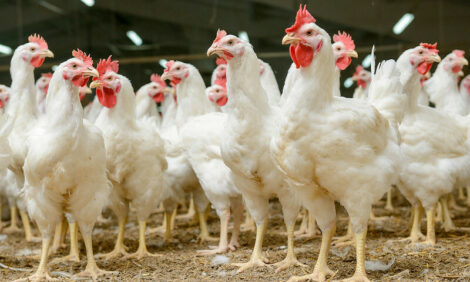



Optimism seen as US agriculture heads into 2022
Beef, chicken and pork production are expected to do well in 2022 amid growing world demanding

Fox discussed his outlook at Oklahoma State University Extension’s 2021 Rural Economic Outlook Conference in October, where he addressed the longer-term effects of the COVID-19 pandemic, the shrinking labor force, drought impacts on cattle supplies, packer concentration, poultry profitability, views on policy he has seen in evidence coming out of Washington D.C. and more.
"Commodity prices across the board are doing pretty well, particularly the grains and especially cotton,” Fox said. “Cattle prices could be a bit better, but they’re not terrible. The most obvious challenges are some key risks on the crop inputs side.”
Among the challenges listed by Fox:
- There are going to be shortages of chemicals and fertilizer because of plant shutdowns and logistical issues.
- Fertilizer prices are going to be higher the remainder of this year and into 2022.
- Supply chain issues will continue to plague producers for the foreseeable future.
“Tractor repair parts, blades for equipment, forage choppers, pesticides and herbicides; you name it, there are going to be delays and shortages,” Fox said. “As a former dairy farmer, I can attest a producer can be in big trouble if a piece of equipment goes out. To combat this, keep more spare parts on hand, if possible, and stick to a well-designed maintenance schedule.”
Trent Milacek, OSU Extension area agricultural economics specialist, agreed with Fox and recommends Oklahoma producers take all possible steps to ensure they have a plan in place for several months or more to lessen the negative effects of potential challenges.
“Get your fertilizer supplies purchased, even if you have to keep them in a shed,” Milacek said. “Take advantage of current good crop prices; forward contract, look at futures prices, lock in what you can. There isn’t a lot an individual producer can do about the specifics of ongoing trade negotiations, but producers need to pay attention and manage as best they can any fallout and related effects.”
Ongoing trade negotiations between the United States and China could be particularly important. The current Phase One deal expires at the end of this year. Most analysts agree American agriculture has fared well overall. Unfortunately, other segments of the U.S. economy have not.
“Producers and agribusiness leaders need to watch what happens with the upcoming negotiations as America attempts to get something better across the board,” Fox said. “There is going to be a lot of pressure from various industries put on negotiators.”
Protein outlook
Protein production is expected to do well in 2022. The world is demanding access to more meat — beef, chicken, pork, Fox recently told the agricultural television program SUNUP.
“The United States is the world’s most efficient producer of meat,” he said. “As long as we have a level playing field, there should be strong international markets for American meat, although some types will be more popular than others in specific countries, as always.”
On the home front, most beef cattle will need supplemental feed in addition to hay this winter. The amount and type of supplement depends on the type and amount of hay available. Crop and feedstuffs prices are sharply higher this year, in part because of the export-driven corn market. Current corn prices in the southern Great Plains are 40-50% higher than the same time last year.
“Hay prices in Oklahoma are up 23.5% year over year and up 10.6% in Texas compared to the same time last year,” said Derrell Peel, OSU Extension livestock marketing specialist. “Increased feed costs have been negatively affecting feedlots for several months. The impacts will grow as cow-calf and stocker producers face additional feed and supplement needs this winter. Plan for those needs now.”
OSU Extension recommends producers begin the process by increasing their awareness of cattle nutritional requirements based on production stages. Testing and weighing hay will help determine the nutritional contribution of hay to meet cattle needs, and careful feeding of hay can help reduce waste and make supplies stretch farther.
Fact sheets detailing research-based information and recommendations for managing farm and ranch costs are available online and through OSU Extension county offices.
In terms of overall farm and ranch profit projections, commodity prices will be high, but most industry analysts — including Fox — don’t expect producers and related agribusiness operators to feel the full brunt of the cost increases this year. Rather, the increases will be felt most keenly on income generated from next year’s crops and livestock.








